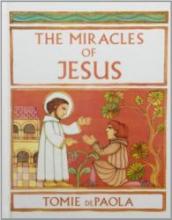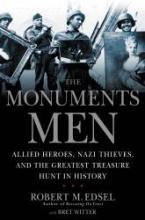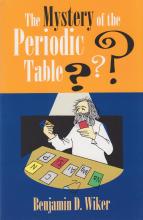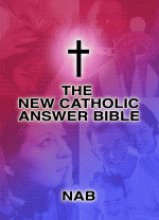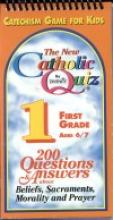No name
The Miracle on 34th Street
The idea for the movie originated as the Davies family watched the Macy's Thanksgiving Day Parade from their apartment in post-WWII New York City. Mr. Davies remarked on the growing commercialism of the season and asked "What would Santa do if he were here today?" The answer was a classic movie from 20thCentury Fox. The book, The Miracle on 34th Street, is true to this original movie - written by Davies and his wife after the movie's debut, the book was an instant success. The copy we have, reprinted in 1998 by Galahad Books, is richly illustrated by Tomie de Paola.
This has been our lunch-time read-aloud since Advent began. The book stays very close to the movie but does have some slight differences - there is no young Alfred in this book, but Mr. Sawyer is just as rotten!
Reading this book aloud to my 3, 5, and 6 year-olds has helped me understand why I've always loved this story. Kris Kringle explains early on that "Christmas isn't just a day. It's a frame of mind." Towards the end of the book, Doris explains to her daughter that "faith is believing in things when common sense tells you not to... Anyone could have faith when everything was fine. But real faith meant believing, rain or shine." These two quotes are a summation of why Christmas is my absolute favorite holiday and why I don't mind my little ones believing in Santa Claus - he's the personification of the magic of the season and the mystery of Incarnate Word!
The Miracles of Jesus
This book is a beautiful way to help your children learn to know and love Jesus. With many simple pictures (but nicely done) and just enough details of the story, Tomie de Paola relates how Jesus helped others while he was on earth. Stories include: The Wedding at Cana, The Catch of Fishes, The Calming of the Storm, The Loaves and The Fishes, Jesus Walks on the Water, The Paralyzed Man, The Centurion's Servant, Jesus Heals the Lepers and The Raising of Lazarus. (13 stories altogether) My children love to hear about how good Jesus is and how much he loves them. This book is a really nice way of reinforcing that idea.
The Monuments Men
The Mysteries of Life in Children's Literature
This book is not too "scholarly" to enjoy, and I have truly enjoyed it. Each of the chapters discusses a different element of children's literature in the context of actual books. There is a complete synopsis of the book at this address:
http://www.neumannpress.com/mysoflifinch.html
Be forewarned: you will be running to your bookshelves to start reading some of these books to your children and to re-read them yourself.
The Mystery of Harry Potter
The Mystery of the Periodic Table
This new title from Bethlehem Books follows the tradition of Jeanne Bendick with her books on Archimedes and Galen by making scientific concepts accessible to ordinary people.
Dr. Wiker is a prolific author of articles on matters relating to science and the faith. He has taught at Thomas Aquinas College and Franciscan University of Steubenville.
Wiker takes us all the way back to the Neolithic era to begin his story of mankind's fascination with metals that started the development of the science of Chemistry. The various scientific characters that play a role in this story – from ancient Greek atomists to brilliant modern scholars – are interesting in and of themselves. We learn of the diligent John Dalton (1766-1844) who kept a daily journal called "Observations on the Weather" for 57 years; the daring and foolhardy Humphry Davy (1778-1829), who discovered laughing gas and a whole slew of elements, and Dimitrii Mendeleev (d. 1907) who discovered the order of the elements by 'playing cards.' A great deal of scientific content that led to the development of the Periodic Table is presented in these middle chapters. The content is made particularly accessible through Wiker's humorous, engaging style and the connections he makes between each scientist's interest in a particular subject and what that meant to scientific progress. He also has fun pointing out the errors scientists made that ironically caused some of the very greatest leaps in scientific knowledge.
The last three chapters can be a little harder to follow and students will benefit from working through them slowly and carefully studying the numerous diagrams. The publisher recommends that, although the book is generally accessible to ages 10 and up, these later chapters might be more understandable to slightly older children. I found that drawing up additional diagrams of my own helped me to follow the text better (particularly diagrams of the structures of the electron "shells"). Diligence in studying these last few chapters really pays off, though, as the final discoveries about the Periodic Table and the well-ordered nature of the relationships between the elements are absolutely fascinating.
Now, you might be asking yourself "Why would someone who teaches at Catholic colleges and writes for Catholic publications be so interested in the Periodic Table?" The answer is simple: The Periodic Table shows the relationships between the most basic elements that comprise everything on earth. It is phenomenal and mind-boggling how mathematically-ordered these elements are. This kind of order seen in nature is a powerful argument against random and chaotic theories of the origins of the world. I should also note that, although Dr. Wiker's interest in this topic is likely related to his faith, he never directly brings up the topic in his book. I'm really glad that he didn't. There's a time for laying it all on the table and a time for a little more subtlety. This sort of book allows readers to discover some of the "Wow!" of Science and later, gradually make the connection between the order of the elements and the awesomeness of the Creator who designed it all.
Highly and enthusiastically recommended! Probably the most fun I've ever had reading a science book. :)
The Narnia Cookbook
Commentary by Douglas Gresham
The New Catholic Answer Bible
- What is Apologetics?
- Does the Church Teach Evolution?
- Why is Catholic Worship Full of Rituals?
- What is the Holy Trinity?
- Aren't Statues a Form of Idolatry?
- Why Won't the Church Ordain Women?
- Why Are Abortion and Embryonic Stem Cell Research Wrong?
At the same time, no matter how terrible the evil caused by sin, God is great enough, and wise enough, to bring about through that evil an even greater good (see Gn 50:20, Rom 8:28).The first reference is what Joseph says to his brothers when they come to Egypt to get grain, while the second is the famous "All things work out for good for those who love God." Although these references do speak of God bringing good out of evil, it was not obvious to me that it was an "even greater good" than the one God would have brought about had the evil not taken place. In another place, insert K-3 (about divorce) refers to Mt. 19:9, which contains the (in)famous "exceptive clause." Unfortunately, the RNAB has a unique rendering of this exception as "unless the marriage is unlawful," which is an interpretation or commentary; the actual text literally reads "except for unchastity." I am uncomfortable with the tract treating this gloss as though it were really what the Bible says. It may work with someone who only uses this Bible version, but what happens when he encounters a different version, or a Protestant calls him on it? I consider these quibbles and overall, Thigpen and Armstrong have done an excellent job of explaining the Church's teaching on a variety of topics simply and accurately.
This book includes RNAB Bible text and reference aids, plus 88 pages of inserts for a total of 2008 pages.
The New Catholic Quiz: First Grade
This book provides 200 questions (50 each in four different categories based on the four sections of the Catechism of the Catholic Church - Beliefs, Sacraments, Morality and Prayer) to help children reinforce basic points of Catholic doctrine. Each page has a question from each category with answers on the back of the page. The color-coding makes for easy reading and checking of answers. My children really enjoyed the sometimes humorous choices for the multiple-choice questions. I thought these made the Quiz more engaging and helped them be more memorable for children. Quiz questions can be answered informally or in a game format where scores are kept. My children enjoyed this quiz book very much.
Sample questions from this book: (page one) Belief: God created the universe and everything in it. True or false? When a man and a woman get married they ________. (a. promise to love each other always, b. promise to drive the same car, c. promise to buy a house together) Why is life holy? (a. becaues it is short, b. because God let us do anything we want, c. because God, whog ives life, is holy) Who leads our prayers at Mass? (a. the priest, b. the server, c. the lector)
Imprimatur

